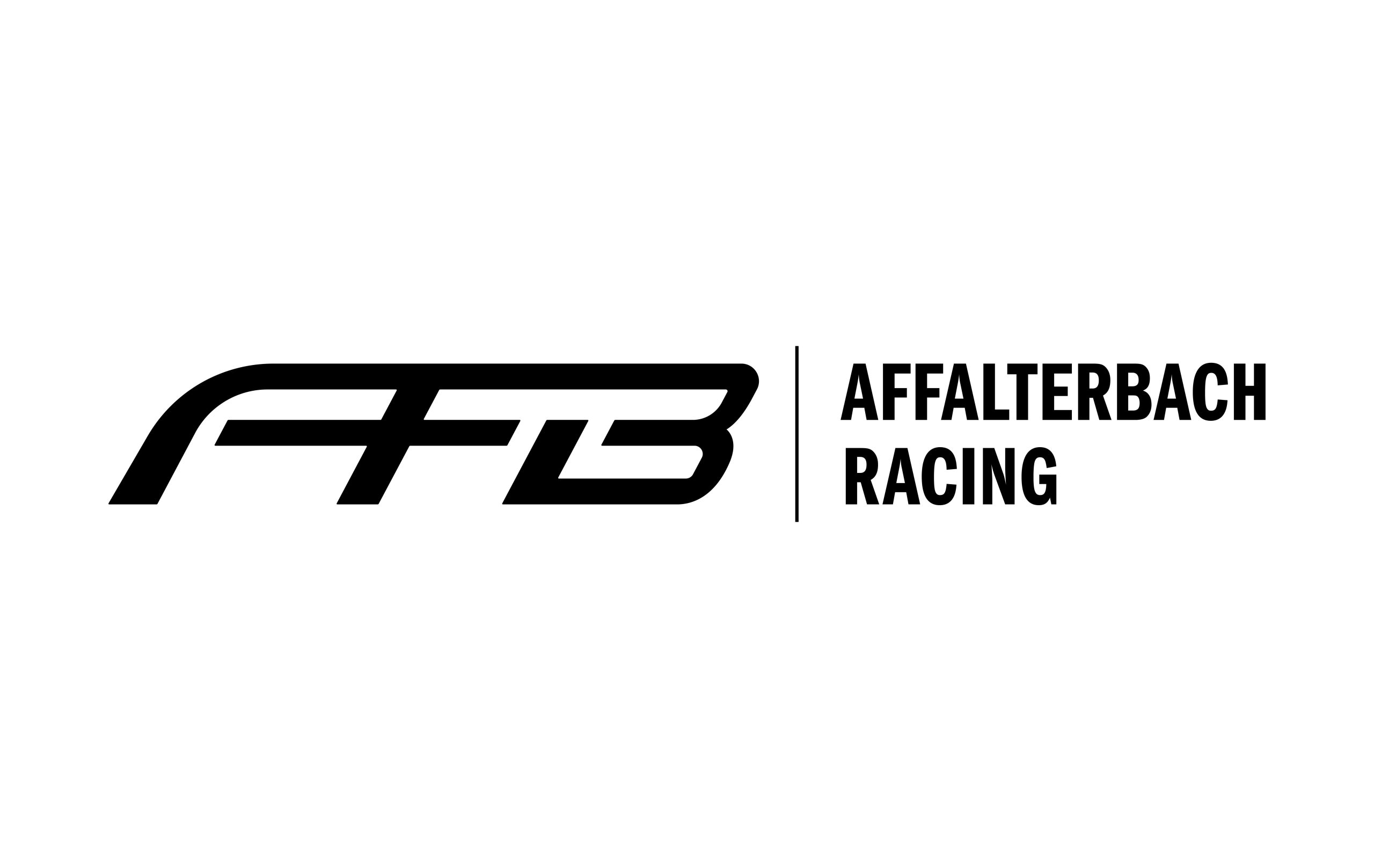Why is my car smoking under the hood?


Is your car smoking under the hood? Don’t panic just yet! Before you start worrying about costly repairs, take a deep breath and read on. In this article, we’ll explore the most common causes of smoke from overheating engines, oil and coolant leaks, failed piston rings, and clogged air filters. By understanding these causes, you’ll be able to quickly and efficiently solve this problem and get back on the road in no time.
Overheating Engine
When an engine gets too hot, it can lead to a range of problems. One issue is a boiling over engine that expels steam and smoke under the hood. This is known as Engine Overheating.
The primary reason behind an overheated engine is lack of coolant or inadequate cooling systems. As the temperature rises, it can lead to damage within the engine and other components under the hood.
If left unaddressed, an overheated engine can cause permanent damage to pistons, cylinder walls, and head gaskets leading to costly repairs.
To avoid these problems, it’s vital to regularly check your vehicle’s oil and coolant levels and ensure you’re adequately maintaining the car’s cooling system by flushing the system every two years or so.
Don’t neglect your regular maintenance schedule; otherwise, you may find yourself stranded on the side of the road with a steam-blowing hood.
Oil Leaks
The presence of petroleum-based fluids outside of the engine is a common cause of smoke under the hood. These hydrocarbons may contribute to oil leaks in gaskets, seals, or crankshaft bearings. Leaks can also occur if the drain plug, oil filter, or oil pan corrode or loosen over time. In addition, high oil pressures or overheating may exacerbate these issues.
If left unattended, oil leaks can result in significant engine damage. The engine may lose power from decreased lubrication, and sludge buildup can clog intake ports and reduce fuel economy. It is important to regularly check for signs of leaks such as poolings under the vehicle or low oil levels. Conducting regular maintenance and ensuring that all parts are tight and functional is imperative to preventing expensive repairs.
Pro Tip: Keep an eye on your dashboard’s warning lights – if your car starts smoking while driving, do not ignore it! Pull over safely as quickly as possible and turn off your vehicle to prevent further damage.
Coolant Leaks
One of the leading causes of smoke under the hood is a leakage issue. The coolant leakage usually happens when there is a crack or damage in the engine block or cylinder head. It may occur due to overheating resulting from improper maintenance, low-quality coolant, and belt failure.
When the coolant system leaks, it can cause the engine to overheat quickly, which leads to other issues like blown gaskets and cracked cylinders. Regular maintenance and check-ups by certified mechanics can prevent such losses.
When you see white steam coming out from under your car’s hood, it indicates that your engine is overheating due to a coolant leak. This problem needs immediate attention as it might turn critical if not addressed on time.
In 1999, Ford recalled 714k vehicles due to problems with leaking coolant that could lead to an engine fire for their Taurus and Mercury Sable models with standard 3-liter engines between 1996 -1997.
Failed Piston Rings
When the mechanism in an automobile’s engine malfunctions, it can lead to smoke under the hood. One of the possible reasons for this could be a failure of the piston rings. Piston rings are responsible for maintaining a tight seal between the cylinder wall and the piston, holding in gases and lubricating oil.
If piston rings become damaged or worn out over time, they can no longer create a tight seal, which allows gases and lubricants to escape into the crankcase. When these fluids heat up they produce smoke, which is then released from beneath the hood.
It is important to note that smoke produced from failed piston rings will possess a bluish-grey coloration due to oil mixing with fuel.
To prevent such problems from occurring in automobile’s engines, regular maintenance checks should be performed by certified mechanics. Replacement of faulty piston rings or improving lubrication can also prove helpful in avoiding engine damage due to failed piston rings.
Clogged Air Filters
Accumulation of dirt and debris on air filters leads to restricted airflow, ultimately causing smoke under the hood. Over time, these particles clog up your air filters, creating a decrease of clean air circulation into the engine. As a result, the engine compensates for this by burning more fuel, leading to higher emissions of smoke.
If left unchecked, clogged air filters cause an imbalance in the fuel-to-air ratio necessary for efficient combustion. Moreover, they can also compromise other important parts like oxygen sensors and spark plugs that play a crucial role in ensuring smooth running engines. Changing filters periodically can reduce potential damage while helping drivers save on gas.
Routine maintenance schedules should include replacing dirty or debris-filled filters because they improve fuel efficiency while reducing emissions. Effective cleaning solutions such as compressed air can help clear out filter blockages effectively but are only suitable in situations where the buildup isn’t too severe.
By changing grimy and blocked-up filters routinely, drivers can restore their car’s full functioning potential at minimal costs. A well-oiled machine will optimize driving efficiency and improve overall performance while keeping engines healthy.
Diagnosing the Problem
To diagnose your smoking car problem, use this section with the title, “Diagnosing the Problem” and its sub-sections as a solution. Determine the color of the smoke, check fluid levels, inspect hoses and belts, perform a compression test, and examine the exhaust system to identify the cause behind the smoking issue.
Determining the Smoke Color
Different colors of smoke being emitted by a vehicle indicate various issues happening under the hood. Here is a table outlining the possible causes for each type of smoke.
| Smoke Color | Possible Causes |
|---|---|
| White | Coolant in the combustion chamber, leaky head gasket, damaged cylinder, or contaminated fuel |
| Blue | Oil burning in the engine or faulty valve seals |
| Black | Burning excess fuel due to faulty injectors or a clogged air filter |
| Gray | Malfunctioning transmission vacuum modulator or turbocharger oil seal |
It’s essential to address any color deviation from normal emissions promptly to avoid escalating and costly damages. Keeping up with regular maintenance is key to prevent any problems from developing.
It’s vital not to misinterpret steam as smoke when determining white emissions. Furthermore, checking fluid levels regularly can save one from costly repairs.
A friend got pulled over last year and was about to get a ticket for excessive black exhaust but only had a dirty air filter. After replacing that, he passed emissions testing with flying colors!
Checking Fluid Levels
Checking the fluid levels is a fundamental step in diagnosing vehicular problems. Accurately identifying whether there’s enough oil, transmission fluid, brake fluid, and coolant could prevent serious damage to the engine and other essential components of your automobile.
- Start your car engine and allow it to run for a few minutes before inspecting any of the fluids.
- To check oil level, turn off your vehicle and locate the dipstick, remove it and wipe it clean with a rag/napkin before placing it back in its place then take it out again to assess if the oil falls within an acceptable range.
- To check other fluids like transmission fluid-levels/coolant/brake-fluid swivel towards their respective reservoirs located beneath the hood. To ascertain if they’ve got sufficient amounts there should be marks/symbols indicating minimum & maximum level ranges on them.
Paying close attention to these indicators is crucial regardless of how well you maintain your car because seemingly minor changes might indicate problems that require attention sooner rather than later.
While checking the fluids’ levels do not rely entirely on visual inspections alone; use specific tools like dipsticks or test strips for accurate measurements. Better yet trust certified professionals who excel at this task or outright replacement of low-quality parts causing failure rates.
With routine checks, you can establish an efficient maintenance plan for optimal functioning and longer lifespan of your car’s components; decreased need for costly repairs/replacements resulting in more savings over time!
Inspecting Hoses and Belts
The examination of conduits and straps is an essential step in identifying vehicular issues.
- Examine hoses for leaks, cracks, and signs of wear.
- Make sure all clamps are tight and secure.
- Check belts for signs of damage or excessive wear.
- Ensure that there are no cracks or glazing.
While examining the hoses, it’s crucial to identify any visible indications of aging on them. On the other hand, while scrutinizing the straps, focus particularly on the contact areas between belts and pulley wheels.
Pro Tip: Always keep a regular check on your vehicle’s hoses and belts – they’re prone to failure and can result in significant harm if not taken care of properly.
Performing a Compression Test
This diagnostic test involves checking the engine’s compression levels to identify potential problems with engine performance.
3-Step Guide:
- Begin by warming up the engine, turning off all accessories and removing all spark plugs
- Use a compression tester to connect to each cylinder in turn, turning over the engine 4-5 times as you note the reading
- If the readings vary beyond 10% from one cylinder to another or are low overall, this could indicate problems with rings, valves or head gasket
During the test, conduct it with safety protocols in mind.
True Story:
A mechanic used a compression test on a car after noticing it was consistently stalling when idling. The results revealed that one cylinder had significantly lower compression than others, leading to further testing which uncovered damaged piston rings. The repair cost was significant but cheaper than replacing the engine entirely.
Examining the Exhaust System
A vehicle’s exhaust plays an essential role in its performance – by managing emissions and expelling harmful gases. Being aware of any faults or concerns within the exhaust system can help avoid a decrease in fuel efficiency, poor engine performance, and even further damage to the vehicle.
Here is a detailed table outlining things to examine while inspecting a vehicle’s exhaust system:
| Component | Indicators of Fault |
|---|---|
| Muffler | Rust, holes, excessive noise |
| Catalytic Converter | Soot marks, cracks |
| Pipes | Rust, discoloration |
| Oxygen Sensor | Poor fuel economy, check engine light illuminated |
During examinations, ensure that all parts of the exhaust are clean and functioning properly. Any rust or leaks must be repaired immediately.
Aside from addressing general maintenance concerns for optimal engine performance, these checks also play an important role in contributing to cleaner air quality and less pollution from vehicular emissions.
It’s critical to keep one’s vehicle running effortlessly and reliably with regular checks on its systems. Failing to catch problems early on could damage vital components to the point where costly repairs are needed – saving time and money in the long run is always crucial.
A clean automobile exhaust reduces hazardous substances emitted into the atmosphere via gasoline combustion while increasing fuel efficacy and improving engine efficiency.
Addressing the Issue
To address smoking under the hood in your car, you need to take certain steps. Repairing oil and coolant leaks, replacing faulty piston rings, clearing clogged air filters, flushing cooling system, or replacing a damaged catalytic converter can be the possible solutions. Read on to find the right one for your car.
Repairing Oil and Coolant Leaks
If you’ve been experiencing fluid leakage from your vehicle, it’s crucial to address the issue promptly. Here’s a guide for fixing oil and coolant leaks:
- Locate the source of the leak by inspecting the affected area and checking for cracks or loose connections. Use a flashlight if necessary.
- Tighten or replace any damaged valves or hoses responsible for leakage. If a patch job won’t suffice, consider replacing the entire component.
- Top off your fluids once you have repaired any damages. Make sure to monitor your levels frequently in case further issues arise.
It’s also vital to note that ignoring such leaks can lead to severe engine damage if left unattended. As such, getting your car checked by a professional is highly recommended.
Pro Tip: Prevention rather than cure is often better when it comes to leakages. Regular maintenance check-ups can help nip any potential issues in the bud before they escalate into hazardous ones.
Replacing Faulty Piston Rings
When addressing the issue of faulty piston rings, it’s crucial to take a professional approach. To tackle this matter, the process involves removing and replacing damaged piston rings.
Here is a 3-Step Guide for replacing faulty piston rings:
- Start by removing the engine from the vehicle and disassembling it.
- Locate the faulty piston ring, remove it, and replace it with a new one.
- Finally, reassemble everything and perform necessary tests to ensure that your engine is working correctly.
When dealing with such issues, remember that each engine may differ regarding technique or procedure. Therefore it’s essential to consult your mechanic before executing any action.
It’s worth noting that piston ring problems come in different shapes and forms. A common issue seen is when you have worn-out piston rings. If not fixed promptly, this could lead to further problem escalation.
In similar situations, Jim had been experiencing strange noises from his car. Upon investigation by his mechanic, it was determined that he had several failed piston rings. After discussion with his mechanic on what needed fixing and upon replacement of the faulty piston rings required – His car drove smoothly again!
Clearing Clogged Air Filters
A dirty or clogged air filter can significantly reduce the efficiency and lifespan of your heating and cooling system. Not only that, but it can also affect indoor air quality. Here’s how to clean your air filters in four simple steps:
- Turn off the unit – Before you begin cleaning, always switch off the power to the unit.
- Find and remove the filter – The filter is often located between the return duct and the blower compartment of your HVAC system. Once you have located it, gently take it out.
- Clean or replace the filter – There are two ways to clean an air filter: either wash it with mild detergent and water then leave it to dry OR replace it altogether if necessary.
- Re-insert the filter – After washing or replacing, carefully put back the clean filter into its original place, ensuring that it fits snugly.
In case of persistent issues, contact a professional for services.
Pro Tip: To ensure proper maintenance of your HVAC system, make sure to check your air filters monthly and replace them every three months on average.
Flushing Cooling System
The process of thoroughly cleaning the cooling system can be referred to as ‘purging coolant’. To ensure optimal performance, it is important to flush the cooling system. Follow these 3 simple steps to get it done:
- Drain the radiator: Remove the radiator cap and let the engine cool. Place a container underneath and open the drain valve. Allow all coolant to drain out.
- Add flushing solution: Close the valve and add flushing solution with water as per manufacturer’s instructions. Keep the engine running for recommended time.
- Rinse and refill: Open the valve again to drain solution mixture out completely. Fill with fresh coolant and bleed any air pockets before replacing radiator cap.
It is essential to carry out this task annually or based on recommended intervals mentioned in your car’s manual for pristine conditioning of your cooling system. To maintain optimal efficiency, keep an eye on your thermometer gauge and hoses, check leaks intermittently, refill at regular intervals if levels are low.
These simple steps not only preserve optimum performance but also prevent clogging that can lead to overheating thus contributing towards long vehicle life cycle.
Replacing Damaged Catalytic Converter
When faced with an issue of a faulty catalytic converter, it becomes necessary to replace the damaged component. This involves several steps and procedures that must be followed for effective replacement.
- Assessment
- Assess the attached components to determine their functionality.
- Additionally, check for any obstructions or indications of looseness.
- Disassembly
- Begin to disassemble the engine carefully by loosening bolts and removing the fastenings holding the converter in place.
- Replacement
- Once the damaged catalytic converter has been disconnected from its attachments and removed completely, it should be replaced with a new one.
During this process, avoid leaning on or hitting the new catalyst converter as it may damage it in return. Furthermore, ensure to follow standard safety protocols such as wearing protective gear while handling sharp objects as well.
To prevent future catalyst converter damages, ensure proper regular maintenance of your vehicle by using high-quality fuel and avoiding harsh driving conditions. In summary, if faced with this problem again, consider following these three simple steps for a quick solution!
Preventative Maintenance
To ensure your car doesn’t smoke under the hood and stays in top condition, preventative maintenance is key. Regular oil changes, ensuring proper fluid levels, replacing air filters, regular engine tune-ups, and checking hoses and belts for wear and tear are essential actions that can help keep your car running smoothly.
Regular Oil Changes
Regular fluid modification with a focus on oil changes is an essential aspect of preventative maintenance. Proper oil levels and clean filters help ensure efficient engine function, minimize friction, and limit premature wear and tear on the vehicle’s internal components.
Frequent oil changes are especially critical for vehicles subjected to harsh conditions such as heavy loads, stop-and-go driving patterns, or extreme temperatures. They can help preserve longevity, power, fuel economy and reduce the risk of a catastrophic breakdown.
Regular oil replacement can be traced back to Henry Ford’s first car models in 1908. Early gasoline engines relied mainly on thick oils that needed frequent replacements due to carbons and soot building up over time from incomplete combustion. Now synthetic oils are used for better durability or modified hydrocarbons known as Synthetic Blend which significantly outperform traditional crude petroleum-based oils.
Overall, instilling good habits regarding fluid maintenance remains optimal for both economic durability and personal safety.
Ensuring Proper Fluid Levels
Maintaining proper fluid levels is essential to keep machinery functioning seamlessly. Here is a 5-step guide to ensure you have an adequate amount of fluid without any potential damage:
- Check your manufacturer manual for the correct fluids and volumes required.
- Inspect the equipment’s dipstick, which accurately indicates fluid levels.
- Look for signs of leaks or cracks that may cause reduced levels over time.
- Add more fluid if the current level is less than the recommended amount.
- Regularly check fluid levels each month and stay on top of any unusual readings.
It is vital to use high-quality fluids, especially in high-performance equipment, as it can prolong their lifespan and operational efficiencies.
A well-maintained car oil change system often results in saving thousands of dollars in repair costs throughout the vehicle’s life span.
Once, a factory worker neglected to check hydraulic machine oil levels after his lunch break – he had forgotten! The machine stopped working within seconds because there was no oil left. The worker had been careful enough until then, but even a momentary lapse could lead to massive losses or preventable costly repairs.
Replacing Air Filters
Air filters play a vital role in maintaining the air quality of HVAC systems. Replacing them regularly can prevent costly damages and improve energy efficiency. Here is a guide on how to Replace Air Filters:
- Turn off the HVAC system and locate the air filter
- Remove the old filter and check its dimensions
- Purchase a new filter with matching dimensions from a reputable supplier
- Insert the new filter, following manufacturer instructions for direction and secure any clips or seals
- Turn on the HVAC system and monitor it to ensure there are no issues after replacing the filter.
Additionally, if you have pets or live in an area with high pollution levels, then you may want to consider changing your air filters more frequently. A clogged or dirty filter can force your system to work harder, leading to higher energy bills and reduced lifespan.
According to Energy.gov, replacing a dirty filter with a clean one can lower your air conditioner’s energy consumption by 5% to 15%.
Regular Engine Tune-Ups
Maintaining your engine’s performance through consistent check-ups is essential to ensure its longevity and efficiency. Routine engine inspections and evaluations are crucial to identifying any potential problems that may cause serious damages down the line. These inspections include thorough assessments of the spark plugs, filters, and fluids used in your system. Proper upkeep of these aspects helps prevent malfunctions, aiding a smooth experience for you while driving.
Checking Hoses and Belts for Wear and Tear.
Checking the status of engine components and ensuring that they are functioning properly is essential to the longevity of your vehicle. As part of preventative maintenance, it is important to regularly check the condition of hoses and belts.
Follow the steps below to check the condition of hoses and belts:
- Inspect all hoses and belts for wear and tear.
- Check for any visible signs of damage such as cracks, splits, or bulges.
- Make sure that all clamps and connections are tight.
- If a belt is damaged or worn out, it should be replaced immediately to avoid failure.
- Hoses should also be replaced if they are showing any signs of deterioration.
Regularly checking the condition of hoses and belts can prevent costly repairs or breakdowns in the future. It is important to include this step in your preventative maintenance routine.
It’s worth noting that some manufacturers recommend replacing certain belts at certain intervals regardless of their visual appearance. Consult your vehicle manual for specific recommendations.
According to Car and Driver magazine, “Broken belts strand motorists on highways more often than flat tires.”
Why is my car smoking under the hood? – Frequently Asked Questions
Q: Why is my car producing smoke under the hood?
A: Smoke under the hood can indicate a few different problems, such as a coolant leak, oil leak, or a problem with the engine itself. It’s important to have the issue diagnosed by a mechanic to avoid further damage to your car.
Q: Is it safe to continue driving my car if it’s smoking under the hood?
A: In most cases, it’s not safe to continue driving a car that’s smoking under the hood. Smoke is often a sign of a serious problem that needs to be addressed immediately to avoid further damage or even a potential fire.
Q: Can low oil cause my car to smoke under the hood?
A: Yes, low oil levels can cause smoke under the hood due to increased friction and heat. It’s important to check and maintain proper oil levels to prevent this from happening.
Q: What should I do if I see smoke coming from under the hood while driving?
A: If you see smoke coming from under the hood while driving, pull over to a safe location and turn off the engine immediately. Do not attempt to drive the car any further until the issue is diagnosed and resolved.
Q: How much does it cost to fix a smoking engine?
A: The cost of fixing a smoking engine can vary depending on the severity of the problem. Minor issues like a leaking coolant hose can cost a few hundred dollars, while a major engine overhaul can cost several thousand dollars.











[…] you sense fumes or smoke emanating from your car, it could be a sign that your engine is overheating. This indicates a serious mechanical issue that […]
[…] your car is making a rattling noise and you notice other symptoms like smoke or a burning smell, you should immediately turn off the engine and contact a professional to have […]
[…] a car begins to emit smoke from its engine without overheating, it may indicate a more serious issue. Common engine-related […]